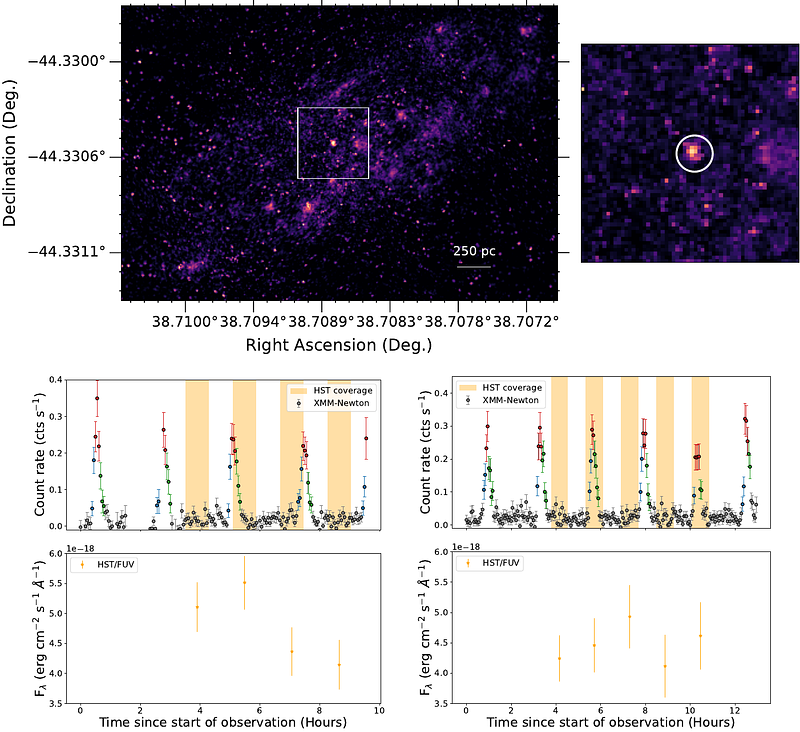Time-resolved Hubble Space Telescope UV observations of an X-ray quasi-periodic eruption source

Time-resolved Hubble Space Telescope UV observations of an X-ray quasi-periodic eruption source
Thomas Wevers, Muryel Guolo, Sean Lockwood, Andrew Mummery, Dheeraj R. Pasham, Riccardo Arcodia
AbstractX-ray quasi-periodic eruptions (QPEs) are a novel mode of variability in nearby galactic nuclei whose origin remains unknown. Their multi-wavelength properties are poorly constrained, as studies have focused almost entirely on the X-ray band. Here we report on time-resolved, coordinated Hubble Space Telescope far ultraviolet and XMM-Newton X-ray observations of the shortest period X-ray QPE source currently known, eRO-QPE2. We detect a bright UV point source ($L_{\rm FUV} \approx {\rm few} \times 10^{41}$ erg s$^{-1}$) that does not show statistically significant variability between the X-ray eruption and quiescent phases. This emission is unlikely to be powered by a young stellar population in a nuclear stellar cluster. The X-ray-to-UV spectral energy distribution can be described by a compact accretion disk ($R_{\rm out} = 343^{+202}_{-138} \ R_{\rm g}$). Such compact disks are incompatible with typical disks in active galactic nuclei, but form naturally following the tidal disruption of a star. Our results rule out models (for eRO-QPE2) invoking i) a classic AGN accretion disk and ii) no accretion disk at all. For orbiter models, the expected radius derived from the timing properties would naturally lead to disk-orbiter interactions for both quasi-spherical and eccentric trajectories. We infer a black hole mass of log$_{10}(M_{\rm BH}) = 5.9 \pm 0.3$ M$_{\odot}$ and Eddington ratio of 0.13$^{+0.18}_{-0.07}$; in combination with the compact outer radius this is inconsistent with existing disk instability models. After accounting for the quiescent disk emission, we constrain the ratio of X-ray to FUV luminosity of the eruption component to be $L_{\rm X} / L_{\rm FUV} > 16-85$ (depending on the intrinsic extinction).